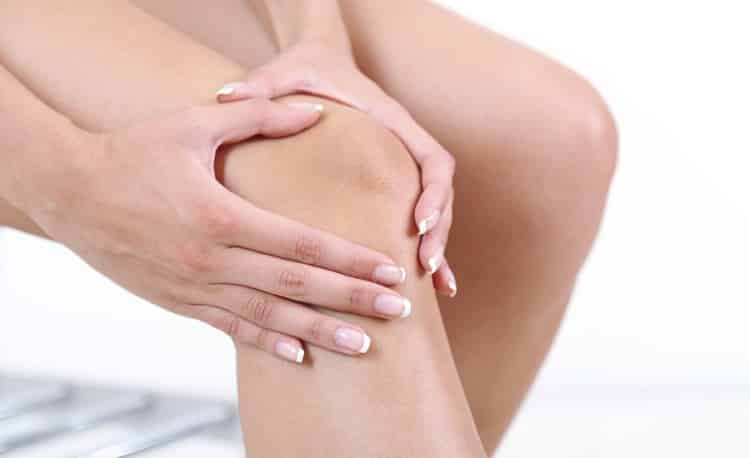
Tendonitis in Kneet | Cause, diagnosis, symptoms, exercises and treatment
Do you have tendonitis in the knee? Here you can learn more about knee tendinitis, as well as the associated symptoms, causes and various treatments for tendonitis in the knee. A tendonitis is known in the technical language as a tendinitis and indicates that there is an injury reaction and inflammation in one or more tendons in the knee. The most common tendon in the knee that is affected by such tendinitis is the patellas tendon - which sits on the front of the knee, below the patella itself. This tendon secures the patella with the inner shin. Please note that you will find links to exercises at the bottom of this article.
The Pain Clinics: Our Interdisciplinary and Modern Clinics
Our clinic departments at Vondtklinikkene (click here for a complete overview of our clinics) has a distinctively high level of professional expertise in the investigation, treatment and rehabilitation of knee diagnoses. Contact us if you want the help of therapists with expertise in knee pain.
Follow and like us too Our Facebook page for free, daily health updates.
- Let's take a closer look at the most common tendinitis at the front of the knee
In this article, we consider the most common cause of tendonitis in the front of the knee - namely patellar tendonitis. If you have persistent pain and malfunction then we advise you to contact a clinician for examination and any treatment of the problem. You risk that the condition worsens if you do not address the problem with a combination of home exercises, self-measures (for example specially designed compression socks for circulatory problems Link opens in new window) and professional treatment if the pain is persistent.
In this article we will, among other things, go through:
Causes
diagnoses
Symptoms
Possible complications of non-treatment or measures
Diagnosis
Clinical signs
Exercises
Treatment
Forecast and duration
In this article you will learn more about what may be causing your tendon inflammation of the knee, as well as various symptoms and treatments for such pain.
Relief and Load management in Tendonitis in the Knee
Tendonitis often occurs due to overload and insufficient recovery. To give your knee more support and relief, it may be advisable to wear one knee compression support, as these can help stimulate increased circulation and reduce inflammatory fluid in the knee. This can provide better conditions for the inflamed and injured tendon in your knee, and thus help the injury heal more quickly. Such supports as this can also be used preventively against knee pain.
Tips: Knee compression support (The link opens in a new window)
Click on the image or link to read more about the knee compression support and how it can help your knee.
Are you wondering something or do you want more of such professional refills? Follow us on our Facebook page «Vondt.net - We relieve your pain»Or Our Youtube channel (opens in new link) for daily good advice and useful health information.
Cause and diagnosis: Why do I have tendonitis in my knee?

Here we will go through a number of possible causes and diagnoses that can lead to tendonitis in the knees.
Causes
Tendonitis in the knee is caused by repetitive strain on the knee - most often due to overuse in sports or sports, but can also occur if you work on a hard surface all day without sufficient cushioning. It is important to understand that such tendon injuries and tendonitis occur past the load exceeds the capacity.
In the case of prolonged failure loads, micro ruptures occur in the patellas, which gradually become larger and larger as the overload continues. When the body tries to repair this, inflammation and fluid accumulation occurs in and around the tendon itself. Over time, the tears in the patellar tendon will cause it to gradually become weaker and weaker - which in turn increases the risk of a tendon rupture occurring in the affected tendon (partial or complete rupture).
Common causes and contributing factors to this tendonitis include:
- Mistakes in feet, ankles or legs: Significant misalignment of the feet (pes planus / flat foot), the ankles (inward-facing ankles) or changes in the leg position (for example due to congenital hip problems) can all result in higher strain on the knees and thus also the patellas. This provides the basis for a higher risk of being affected by both tendon inflammation and tendon injuries in the knees.
- Lack of capacity in the stability muscle: Our muscles relieve joints, tendons and ligaments. If we do not have enough strength and ability to react in nearby stability muscles, then injuries will occur - that is how simple it actually is and that is what most cases of tendon injuries boil down to.
- Overweight: An elevated BMI means more strain on the feet, calves and knees. Which in turn can result in these being overloaded over time. If you know that you have an excessively high BMI, it is advisable that you seek help through your GP to lose weight. Doctors can then refer you to a public nutritionist who can help you put together a diet that ensures that you get better nutrients and fewer calories. Which will result in weight loss over time - preferably in combination with increased exercise and activity throughout everyday life.
- Tight leg muscles and muscular imbalance: A common factor that can cause uneven and high strain on the knees is unusually tight and dysfunctional muscles. When the muscle fibers become less elastic and functional, this also results in them having poorer blood circulation, as well as reduced ability to repair themselves. Having significant uneven muscle strength in, for example, the quadriceps versus hamstrings is also a factor that can play a role in knee pain - as it leads to dysfunction in, for example, running and walking.
Athletes are particularly prone to tendonitis in the knees. This is because explosive movements such as running, jumping and falling out put significantly more pressure on the patellas than many other sports. In fact, running can load as much as five times your own body weight.
Also read: - 4 Exercises for Osteomyelitis
Symptoms of tendonitis in the knee
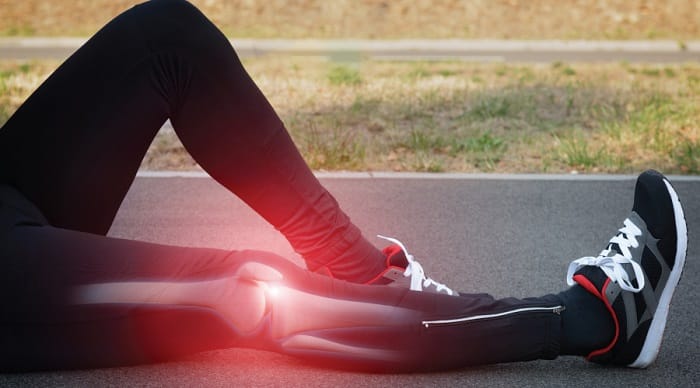
There are several symptoms and clinical signs that may indicate that you have a tendonitis in the knee. Some of the most characteristic symptoms involve pain and pressure soreness at the bottom of the patella - which are also, normally, the first symptoms of knee tendinitis.
Secondarily, one will also experience a burning sensation in the tendon and a swelling. In such a tendon inflammation, you will especially experience pain when you rise from an outcome or have been squatting.
As the tendon fibers become weaker and more irritated, the symptoms will increase and worsen. At the beginning of the problem, you may only experience pain when doing sports or similar loads - but as the condition worsens, and you do nothing about it, even everyday things like walking up stairs or sitting in a car will be able to give knee pain.
Pressure wave treatment is a non-invasive treatment method that breaks down tendon tissue and initiates a natural healing response that both heals and strengthens the tendon fibers. The treatment is performed by publicly authorized health personnel with expertise in muscles and joints - in Norway it involves the three professions; chiropractor, physiotherapist and manual therapist.
Also read: - Have You Tried Pressure Wave Therapy?
Diagnosis of tendonitis in the knee

When you visit a clinician - such as a modern chiropractor or physiotherapist - he or she will first carry out a history examination (anamnesis) and then perform a functional examination. This may involve questions about:
- Your activity level
- What kind of symptoms are bothering you
- When the symptoms are most present
- What relieves the pain
The functional examination involves a physical examination of the knee, where, among other things, one goes through the movement pattern of the knee and knows the structures of the knee.
If there is suspicion of tendon injury or that the functional examination points to a more serious involvement of bone injury, fracture or the like, then imaging can be requested. Both doctor and chiropractor have the right to be referred to such imaging examinations - such as X-rays, MRI, CT and diagnostic ultrasound.
Also read: - 7 Symptoms of Fibromyalgia in Women
Complications of Long-term tendonitis in the knee
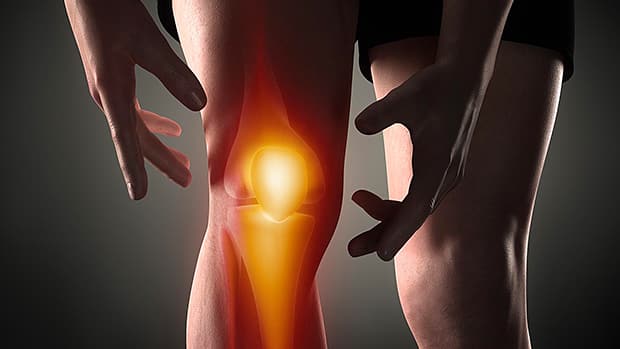
If you do not consult a clinician for measures and treatment - and you have felt that the condition only worsens over time - then you risk that the tendonitis and the extent of the damage will be far more extensive than it should have been. This can mean that the problem becomes so great that conservative treatment does not help as quickly and the pain becomes chronic.
This means that you can expect a long and hard treatment regimen in combination with a rigorous exercise program if you have let it go too far. That's an honest case. We remind you that this is the same diagnosis (patellar tendinitis) that Nora Mørk has been operated on eight times - and now the ninth knee operation is just around the corner.
The latest example shows how difficult it can be for athletes to take enough time for rehabilitation and rest after such an injury. Every surgical procedure, even if it is a peephole operation, involves the risk of scar tissue and injury tissue - which in turn leads to a higher incidence of future tendon injuries. Just ask Nora Mørk about it.
The diagnosis can end careers - and the question many ask themselves is how much more can Nora Mørk's knees withstand?
Also read: - This You Should Know About Rectal Cancer
Treatment of tendonitis in the knee

Treatment will vary somewhat depending on the extent of tendon injury and tendon inflammation. All treatment should have as its main purpose that it stimulates healing and promotes improved functionality.
Conservative treatment
- Eccentric Exercise: The video below shows how eccentric training of tendon inflammation in the knee (patellar tendinitis) is performed. The workout is performed with one-leg outcomes on a sloping board (25 degree angle). A 2005 study documents the effect of this type of exercise (1).
- Physiotherapy: The purpose of physical therapy and exercise is to reduce pain and unnecessary inflammation, as well as strengthen the thighs and the leg muscles.
- Knee Support (Self Action): A compression knee brace - such as this one - can contribute to increased blood circulation towards the injured area, as well as stabilizing the knee joint and tendons.
- Modern Chiropractic: A modern chiropractor works with muscles, tendons and joints. This professional group also has the right of referral to imaging diagnostics should this be necessary.
- Shockwave therapy: Studies have shown significant effect of pressure wave therapy in the treatment of tendon inflammation of the knee (2). Treatment should be performed by a physical therapist, chiropractor or manual therapist.
- Dry needling (needle treatment): Needle treatment can cause minor pain in the area while stimulating healing and repair in the affected soft tissue and tendon tissue.
Invasive treatment
- Cortisone Injection: A cortical injection can relieve the pain, but as documented by the acclaimed Mayo Clinic, this is also a form of treatment that results in weaker tendon fibers and a higher risk of the tendon smoking later. So other treatment should be tested for the longest time before considering this measure.
- Operation: Peephole surgery is the most common surgical procedure for this type of squat. As mentioned, this type of intervention should be avoided if it is not absolutely necessary due to the risk of tendon damage and lifelong scar tissue formation.
The prognosis of tendonitis in the knee
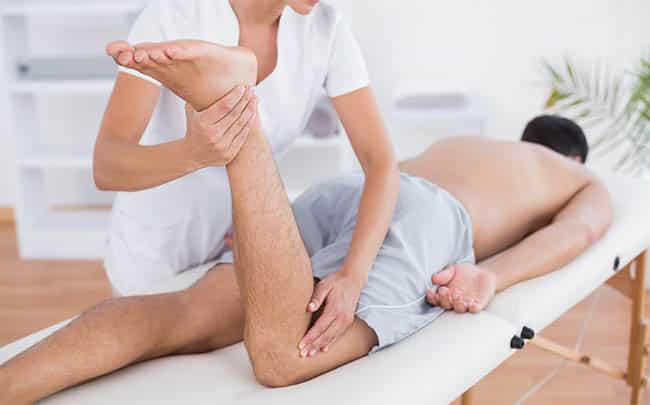
The most important thing you do is to take symptoms and knee pain seriously. With early measures, you have a very good chance of getting completely well again - but if you ignore it, then it will require significantly more measures and treatment.
However, it is generally said that the mildest variants can take about 3 weeks (with proper treatment and measures) to get well. More severe cases can take as long as 6 to 8 months. Some of the more serious cases never get well and end up chronic. As mentioned earlier, this is a diagnosis that can put an end to even the most promising sports career. Therefore, we recommend that you consult a clinician if you experience such symptoms.
Also read: - Rheumatism and Weather Cover: How Rheumatists Are Affected by the Weather
Summarizeringing
It is important to take all knee pain seriously - due to the fact that persistent pain can lead to dysfunctions and worsening symptoms as time goes on. In case of tendon damage and tendon inflammation, you are simply at risk that the tendon fibers will be in ever worse condition and that they will gradually become weaker and more painful.
In the link below you will find some exercises that you can try - but we therefore recommend that you get an adapted exercise program adapted to you and your symptoms via a modern clinician.
Also read: - 4 Exercises against Patellar Tendinopathy
Do you have questions about the article or do you need any more tips? Ask us directly through our facebook page or via the comment box below.
Recommended self help
Reusable Gel Combination Gasket (Heat & Cold Gasket)
Heat can increase blood circulation to tight and sore muscles - but in other situations, with more acute pain, cooling is recommended, as it reduces the transmission of pain signals. Due to the fact that these can also be used as a cold pack to calm down swelling, we recommend these.
Read more here (opens in new window): Reusable Gel Combination Gasket (Heat & Cold Gasket)
Compression Socks (Unisex)
The socks improve blood circulation to the legs and feet - and can be used every single day. And then we not only talk about training, but also for you who work in the store, as a waiter or as a nurse. The compression socks can provide you with the extra help you need to get back to a daily life without bone pain.
Read more here (opens in new window): Compression Socks (Unisex)
NEXT PAGE: - This is how you can know if you have a blood clot
Click on the image above to proceed to the next page. Otherwise, follow us on social media for daily updates with free health knowledge.
 Follow Vondt.net on YOUTUBE
Follow Vondt.net on YOUTUBE
(Follow and comment if you want us to make a video with specific exercises or elaborations for exactly YOUR issues)
 Follow Vondt.net on FACEBOOK
Follow Vondt.net on FACEBOOK
(We try to respond to all messages and questions within 24-48 hours. We can also help you interpret MRI responses and the like.)
Frequently asked questions about tendon inflammation in the knee
Feel free to ask us a question in the comments section below or via our social media.







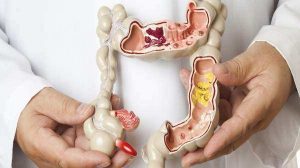

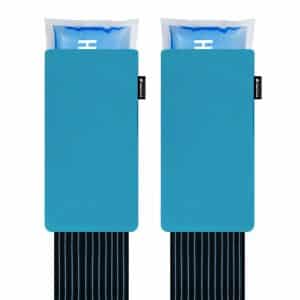

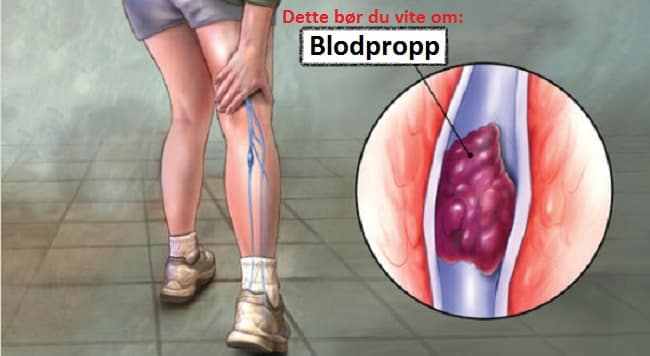

Leave a reply
Want to join the discussion?Feel free to Contribute!